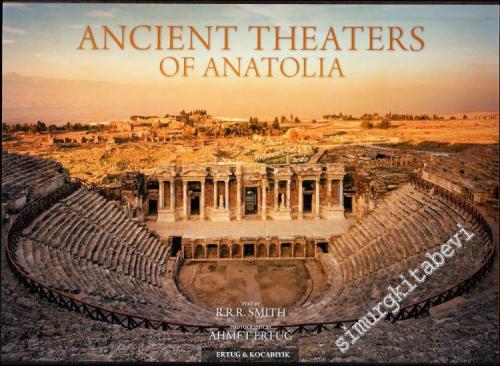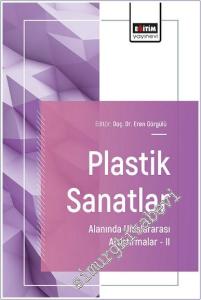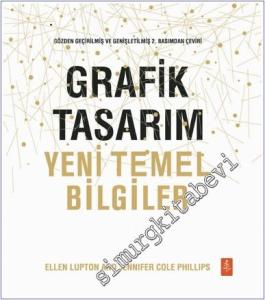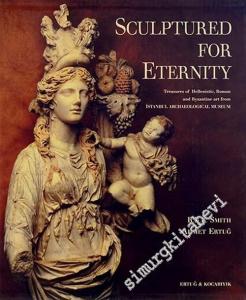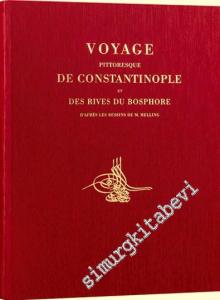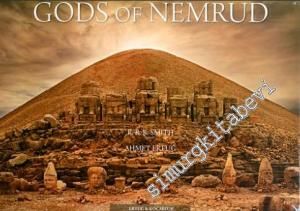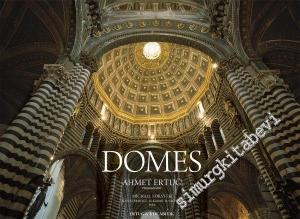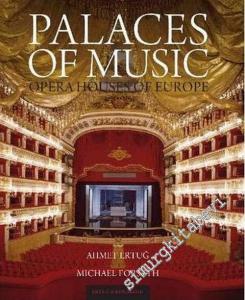#smrgKİTABEVİ Ancient Theaters of Anatolia - 2014
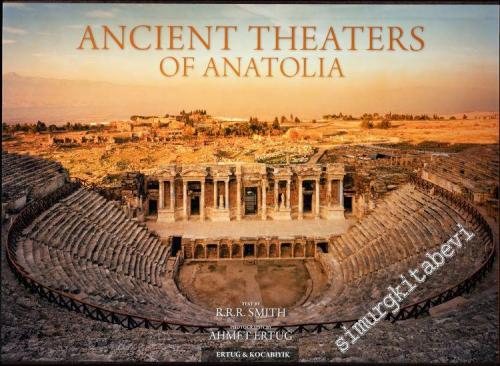
Kitap antik dönemde tiyatroya dair bir girişle açılıyor ve sonra sırasıyla bu olağanüstü yapıları tanıtıyor. Bu yayın belki de ilk kez Anadolu'daki eşsiz tiyatro yapıları mirası için bu düzeyde bir akademik ve fotografik dokümantasyon sunuyor. Yatay formatta 205 sayfadan oluşan kitaptaki 174 renkli levha hem detaylara hem panoramik görüntülere yer veriyor. Tiyatroları süsleyen mükemmel işçilikli heykeller ve freskler de kitapta ayrı bir yere sahip.
MS 2. yüzyılda, Roma iktidarı altında hüküm süren barış ortamının doruk noktasında olunan bir dönemde, Akdeniz'in çevresindeki önemli kentlerin hepsinde bir tiyatro binası bulunuyordu. Çoğu 2. yüzyıldaki formlarını koruyan bu binalar Helenistik dönemde bazı değişimler geçirmiş, eklemeler yapılmıştı. Kentlerdeki en büyük ve çevreye en hâkim yapılan olan tiyatroların kapasiteleri 2 bin kişiden 20 bin kişiye çıkabiliyordu ve çoğunun kent silueti içinde son derece görünür anıtsal büyüklükte sahne arkası yapıları vardı. Dış yüzeyde ağırbaşlı taş süslemeler, iç mekânda sıralar halinde ihtişamlı sütunlar dikkat çekiyordu. Bunların çoğu şaşırtıcı bir şekilde iyi korunmuştur.
Tiyatro hem kurum hem de bina olarak iki anlama sahiptir. Dram, bugün bildiğimiz anlamdaki binaya kavuşmadan çok önce ortaya çıkmış ve tiyatro olarak kabul edilmişti. Dionysos onuruna gerçekleştirilen dini festivallerdeki koral performanslardan doğup sahnelenen tragedya ve komedya aracısına dönüşmüştü. Dramatik oyunlar önce kent meclisi, daha sonra da Roma İmparatorluğu'nun yönetimi altındayken, imparator onuruna düzenlenen gladyatör ve vahşi hayvanların kavgalarını içerene arena gösterileriyle birleşti. Tiyatro binaları, yamaçlardaki şekilsiz amfiteatrlardan, Yunanlar döneminde düzgün bir mimariye sahip, tasarlanmış yapılara, Romalılar zamanında da yepyeni, entegre bir bütüne dönüştüler. Geleneksel Helenistik tasarımı ile yeni Roma usulü tasarımın birleşimi, Anadolu'da MS 1. ve 2. yüzyıllardaki Tiyatro binalarının ana öğelerini oluşturur. Bu kitaptaki tiyatroların büyük bir kısmı, çoğunlukla da uzak bölgelerde (Sagalassos, Selge, Termessos) kalanlar, antik dönemin sonunda terk edildikleri şekilde kalmıştır. Sahne binası çökmüş, oditoryum korunmuş, bitkiler ve düşen taşlar zeminleri kaplamıştır. Bunlar antik dönemin köklü tiyatro kültürü ve eski bina yapım tekniklerinin sağladığı dayanıklılığın kanıtı olan benzersiz kalıntılardır.
Tiyatro, Roma İmparatorluğu döneminde, Anadolu'nun zengin kentleri başta olmak üzere doğu yörelerinin en parlak kurumları olmuştu. Bugün Türkiye'de yüzü aşkın eski tiyatro bulunuyor. Coğrafyaya dağılımları da Roma döneminde kentleşme modelinin izini takip ediyor. Çoğu Ege ve güney sahillerindeki kentlerde bulunuyor ve en iyi durumda olanları Asya ve Likya-Pamphylia yörelerinde. Tiyatro MS 1. ve 2. yüzyıllarda Roma tasarım modeli, değişen işlev ve kent içi rekabete dayalı olarak farklı yollar ve yapım tekniklerinden geçmiştir. İyi tasarımlı Helenistik dönem tiyatrolarına sahip bazı kentler onları korumuş ve sadece sahne kısmında ufak değişiklikler yapmıştır. Priene ve Pergamon (Bergama) bunun iyi örnekleridir.
ENGLISH TEXT
Ertuğ & Kocabıyık Publications presents its latest book Ancient Theaters of Anatolia. Penned by R.R.R Smith, Lincoln Professor of Classical Archaeology and Art at Oxford University, and Director of the Aphrodisias Excavations in Turkey, the book features stunning photographs of Ahmet Ertuğ. Many of the extraordinary images were photographed with an 8 x 10 inch large-format camera, and show these well-preserved theaters in exceptional detail.
The book starts with an introduction on the theater in classical antiquity, and then describes sixteen outstanding theatres individually. This is probably the first time that such combined high-level academic and photographic documentation has been devoted to the extraordinary legacy of theater building in Anatolia.
The book is 205 pages long, in landscape format, with a page size of 33 x 46 cm and 174 color plates, showing both details and panoramic views. Striking photographs of many of the high-quality statues and friezes that decorated the theaters are also included in the book. By the second century AD, at the height of the long peace enforced by Rome, most self-respecting ancient cities in the Mediterranean region had a theatre building. Most of the theaters presented in this book belong to, or were re-conditioned in this period. Most survive in their second-century form but have long archaeological histories of re-design and addition that stretch back to the Hellenistic period. Theaters were among the largest, most imposing structures in ancient cities. Their capacity varied greatly, from 2,000 to 20,000, but most boasted a tall monumental stage-building that reared up from the surrounding cityscape – with austere masonry on the outside and majestic tiers of columns inside. Many are astonishingly well-preserved.
‘Theater' has the double sense of both an institution and a building. Indeed, drama was a developed practice long before it had the building form we know and recognize as a theatre. Drama grew out of choral performance at religious festivals in honor of Dionysos, and evolved into the exciting new medium of staged tragedy and comedy. Dramatic plays soon came to share the theater first with the citizen assembly, and then under the Roman empire, with arena games – the highly popular gladiator combats and wild-beast hunts mounted in honor of the emperor. Theater building underwent a long evolution, from an irregular hillside auditorium to a proper architectural design in the Greek period, and then to a new, fully integrated form in the Roman period. The interplay of traditional Hellenistic design and new Roman design was one of the main aspects of theatre building in Anatolia in the first and second centuries AD. Many of the theaters in this book, often those in more remote locations (Sagalassos, Selge, and Termessos), remained as they had been left at the end of antiquity – unoccupied, with collapsed stage building and well-preserved auditorium, partly covered only by vegetation and fallen masonry. They present remarkable ruinscapes that are vivid testimony to antiquity's deep-rooted theater culture and to the great durability of ancient building techniques.
The theatre remained one of the most vibrant institutions of the eastern provinces under the Roman empire, especially in the prosperous cities of western Anatolia. More than 100 ancient theaters are known within modern Turkey. Their distribution follows the pattern of urbanism in the Roman period. Most are found in the cities of the Aegean and south coast, and the best-preserved are in the wealthy Roman provinces of Asia and Lycia-Pamphylia. The theatre had different trajectories and building histories through the first and second centuries AD in response to Roman design, changing functions, and intercity competition. Some cities with well-designed Hellenistic theaters maintained them with only modest changes, usually to the stage building. The theaters of Priene and Pergamon are good examples.
Kitap antik dönemde tiyatroya dair bir girişle açılıyor ve sonra sırasıyla bu olağanüstü yapıları tanıtıyor. Bu yayın belki de ilk kez Anadolu'daki eşsiz tiyatro yapıları mirası için bu düzeyde bir akademik ve fotografik dokümantasyon sunuyor. Yatay formatta 205 sayfadan oluşan kitaptaki 174 renkli levha hem detaylara hem panoramik görüntülere yer veriyor. Tiyatroları süsleyen mükemmel işçilikli heykeller ve freskler de kitapta ayrı bir yere sahip.
MS 2. yüzyılda, Roma iktidarı altında hüküm süren barış ortamının doruk noktasında olunan bir dönemde, Akdeniz'in çevresindeki önemli kentlerin hepsinde bir tiyatro binası bulunuyordu. Çoğu 2. yüzyıldaki formlarını koruyan bu binalar Helenistik dönemde bazı değişimler geçirmiş, eklemeler yapılmıştı. Kentlerdeki en büyük ve çevreye en hâkim yapılan olan tiyatroların kapasiteleri 2 bin kişiden 20 bin kişiye çıkabiliyordu ve çoğunun kent silueti içinde son derece görünür anıtsal büyüklükte sahne arkası yapıları vardı. Dış yüzeyde ağırbaşlı taş süslemeler, iç mekânda sıralar halinde ihtişamlı sütunlar dikkat çekiyordu. Bunların çoğu şaşırtıcı bir şekilde iyi korunmuştur.
Tiyatro hem kurum hem de bina olarak iki anlama sahiptir. Dram, bugün bildiğimiz anlamdaki binaya kavuşmadan çok önce ortaya çıkmış ve tiyatro olarak kabul edilmişti. Dionysos onuruna gerçekleştirilen dini festivallerdeki koral performanslardan doğup sahnelenen tragedya ve komedya aracısına dönüşmüştü. Dramatik oyunlar önce kent meclisi, daha sonra da Roma İmparatorluğu'nun yönetimi altındayken, imparator onuruna düzenlenen gladyatör ve vahşi hayvanların kavgalarını içerene arena gösterileriyle birleşti. Tiyatro binaları, yamaçlardaki şekilsiz amfiteatrlardan, Yunanlar döneminde düzgün bir mimariye sahip, tasarlanmış yapılara, Romalılar zamanında da yepyeni, entegre bir bütüne dönüştüler. Geleneksel Helenistik tasarımı ile yeni Roma usulü tasarımın birleşimi, Anadolu'da MS 1. ve 2. yüzyıllardaki Tiyatro binalarının ana öğelerini oluşturur. Bu kitaptaki tiyatroların büyük bir kısmı, çoğunlukla da uzak bölgelerde (Sagalassos, Selge, Termessos) kalanlar, antik dönemin sonunda terk edildikleri şekilde kalmıştır. Sahne binası çökmüş, oditoryum korunmuş, bitkiler ve düşen taşlar zeminleri kaplamıştır. Bunlar antik dönemin köklü tiyatro kültürü ve eski bina yapım tekniklerinin sağladığı dayanıklılığın kanıtı olan benzersiz kalıntılardır.
Tiyatro, Roma İmparatorluğu döneminde, Anadolu'nun zengin kentleri başta olmak üzere doğu yörelerinin en parlak kurumları olmuştu. Bugün Türkiye'de yüzü aşkın eski tiyatro bulunuyor. Coğrafyaya dağılımları da Roma döneminde kentleşme modelinin izini takip ediyor. Çoğu Ege ve güney sahillerindeki kentlerde bulunuyor ve en iyi durumda olanları Asya ve Likya-Pamphylia yörelerinde. Tiyatro MS 1. ve 2. yüzyıllarda Roma tasarım modeli, değişen işlev ve kent içi rekabete dayalı olarak farklı yollar ve yapım tekniklerinden geçmiştir. İyi tasarımlı Helenistik dönem tiyatrolarına sahip bazı kentler onları korumuş ve sadece sahne kısmında ufak değişiklikler yapmıştır. Priene ve Pergamon (Bergama) bunun iyi örnekleridir.
ENGLISH TEXT
Ertuğ & Kocabıyık Publications presents its latest book Ancient Theaters of Anatolia. Penned by R.R.R Smith, Lincoln Professor of Classical Archaeology and Art at Oxford University, and Director of the Aphrodisias Excavations in Turkey, the book features stunning photographs of Ahmet Ertuğ. Many of the extraordinary images were photographed with an 8 x 10 inch large-format camera, and show these well-preserved theaters in exceptional detail.
The book starts with an introduction on the theater in classical antiquity, and then describes sixteen outstanding theatres individually. This is probably the first time that such combined high-level academic and photographic documentation has been devoted to the extraordinary legacy of theater building in Anatolia.
The book is 205 pages long, in landscape format, with a page size of 33 x 46 cm and 174 color plates, showing both details and panoramic views. Striking photographs of many of the high-quality statues and friezes that decorated the theaters are also included in the book. By the second century AD, at the height of the long peace enforced by Rome, most self-respecting ancient cities in the Mediterranean region had a theatre building. Most of the theaters presented in this book belong to, or were re-conditioned in this period. Most survive in their second-century form but have long archaeological histories of re-design and addition that stretch back to the Hellenistic period. Theaters were among the largest, most imposing structures in ancient cities. Their capacity varied greatly, from 2,000 to 20,000, but most boasted a tall monumental stage-building that reared up from the surrounding cityscape – with austere masonry on the outside and majestic tiers of columns inside. Many are astonishingly well-preserved.
‘Theater' has the double sense of both an institution and a building. Indeed, drama was a developed practice long before it had the building form we know and recognize as a theatre. Drama grew out of choral performance at religious festivals in honor of Dionysos, and evolved into the exciting new medium of staged tragedy and comedy. Dramatic plays soon came to share the theater first with the citizen assembly, and then under the Roman empire, with arena games – the highly popular gladiator combats and wild-beast hunts mounted in honor of the emperor. Theater building underwent a long evolution, from an irregular hillside auditorium to a proper architectural design in the Greek period, and then to a new, fully integrated form in the Roman period. The interplay of traditional Hellenistic design and new Roman design was one of the main aspects of theatre building in Anatolia in the first and second centuries AD. Many of the theaters in this book, often those in more remote locations (Sagalassos, Selge, and Termessos), remained as they had been left at the end of antiquity – unoccupied, with collapsed stage building and well-preserved auditorium, partly covered only by vegetation and fallen masonry. They present remarkable ruinscapes that are vivid testimony to antiquity's deep-rooted theater culture and to the great durability of ancient building techniques.
The theatre remained one of the most vibrant institutions of the eastern provinces under the Roman empire, especially in the prosperous cities of western Anatolia. More than 100 ancient theaters are known within modern Turkey. Their distribution follows the pattern of urbanism in the Roman period. Most are found in the cities of the Aegean and south coast, and the best-preserved are in the wealthy Roman provinces of Asia and Lycia-Pamphylia. The theatre had different trajectories and building histories through the first and second centuries AD in response to Roman design, changing functions, and intercity competition. Some cities with well-designed Hellenistic theaters maintained them with only modest changes, usually to the stage building. The theaters of Priene and Pergamon are good examples.



